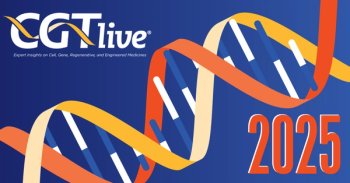
Potential New Prognostic Factor in Breast Cancer: Increase in Cancer Stem Cell Population Following Primary Systemic Therapy
A study published online on May 10, 2011 in the British Journal of Cancer has shown evidence for a new prognostic factor in breast cancer: an increase in cancer stem cell population after primary systemic therapy. The study results indicate that putative cancer stem cells may be chemoresistant to conventional anthracycline-based chemotherapy and may have a role in disease progression following chemotherapy treatment.
A study published online on May 10, 2011 in the British Journal of Cancer (
Study Goal and Rationale
The goal of the study was to investigate changes to the cancer stem cell (CSC) population before and after primary systemic therapy in patients with breast cancer.
The cancer stem cell hypothesis states that cancers are driven by a small population of stem cells that drive tumor growth via their self-renewal function. These CSCs are able to differentiate into the many cells that make up a tumor. This hypothesis has implications for cancer therapies as many cancers are treated with systemic drugs and there is increasing evidence that chemoresistance is a result of CSC populations being naturally resilient to chemotherapies. This is particularly important in breast cancer as primary neoadjuvant systemic therapy is the current standard of care for locally advanced breast cancers. As the authors highlight, “Overcoming resistance to chemotherapeutic agents would represent a major advance in the clinical management of breast cancer.”
Study Methodology and Results
The study analyzed paired breast cancer tissue before and after primary systemic therapy. CSCs were identified by specific biomarkers using immunohistochemistry both prior to and after treatment. The changes were correlated with clinical, pathological parameters and patient outcomes. Ninety-two patients with stage II or III breast cancer and treated at Seoul National University Bundang Hospital were studied.
The authors found that an increased number of CSC biomarker-positive cells in post-chemotherapy specimens was a prognostic factor for disease-free survival even though the size of these cell populations in pre-chemotherapy specimens were not related to patient survival. The authors rationalize that this CSC cell population in post-treatment specimens may have greater clinical significance. However, they cannot rule out that non-stem cell tumor cells are able to acquire a CSC phenotype after chemotherapy treatment via selective pressure. The authors emphasize the need to target CSCs in breast cancer treatment.
Study Caveats and Future Research
Future studies to validate these findings should integrate patients from different cancer centers. The limited short follow-up period and small sample size of this study also warrants a large-scale trial with more patients and longer follow-up in order to confirm the prognostic value of the CSC populations post-chemotherapy specimens. This is especially important, as previous studies have had contradictory results with several failing to find a relationship between CSC populations and survival and others showing an inverse correlation.
It would also be interesting to assess this prognosis factor based on the type of chemotherapy to see whether there are differential results in terms of CSC populations and patient outcomes depending on the chemotherapy type and regimen.
Additionally, the biomarkers used by the researchers identified putative CSCs. However, establishing a concrete definition of a CSC is essential in order to either support or refute the CSC hypothesis and the results of this study. Previous studies have had contradictory results with several failing to find a relationship between CSC populations and survival and others showing an inverse correlation.
Newsletter
Stay at the forefront of cutting-edge science with CGT—your direct line to expert insights, breakthrough data, and real-time coverage of the latest advancements in cell and gene therapy.




